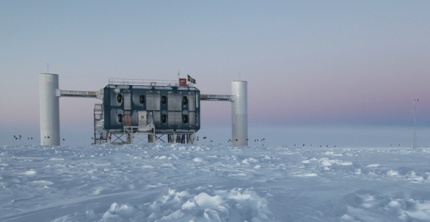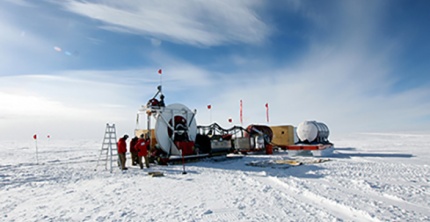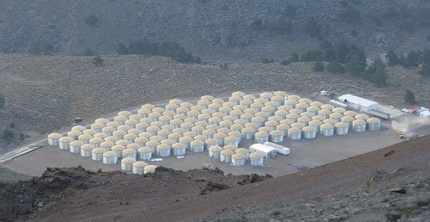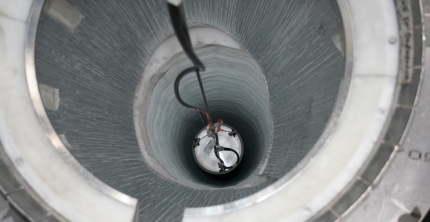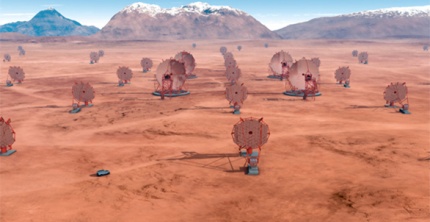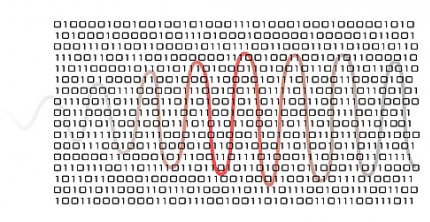The IceCube Neutrino Observatory is a particle detector at the South Pole that records the interactions of a nearly massless subatomic particle called the neutrino. IceCube searches for neutrinos from the most violent astrophysical sources: events like exploding stars, gamma-ray bursts, and cataclysmic phenomena involving black holes and neutron stars.
The Askaryan Radio Array (ARA) is a radio detector array operating at the South Pole, designed for the detection of ultra-high-energy cosmic neutrinos. The goal is to detect the cosmogenic neutrino flux at energies above 1017 eV.
The High-Altitude Water Cherenkov, or HAWC, experiment is a TeV-energy-scale gamma-rayobservatory located at high altitude in Mexico. Its primary goal is to survey the Northern Hemisphere sky for steady and transient high-energy gamma rays and thereby determine the sources of Galactic cosmic rays. The instrument’s construction was completed in January 2015. The Southern Wide-field Gamma-ray Observatory (SWGO) is a Southern Hemisphere counterpart of HAWC that is currently in the research and development phase.
DM-Ice, or Dark Matter-Ice, is searching for dark matter in the Southern Hemisphere. The goal is to perform a search for dark matter using the time variation resulting from the motion of the detector relative to the dark matter halo as a signature. If confirmed, the observation would revolutionize our understanding of particle physics and cosmology. A prototype detector is currently deployed at the South Pole and a next-generation engineering detector array, part of the Cosine-100 experiment, is currently running deep underground in Korea.
The Cherenkov Telescope Array (CTA) will use dozens of imaging atmospheric Cherenkov telescopes to detect gamma rays between 30 GeV and 100 TeV in energy. A prototype telescope is under construction, the first Schwarzschild-Couder telescope ever built, on Mount Hopkins in Arizona. The main goals of CTA are to understand the nature of dark matter and of extreme objects in the universe, including huge black holes at the center of distant galaxies and the remnants of exploded stars, which are possible sources of cosmic rays.
The three-year project, titled “Advancing real-time data processing and reduction in radio astronomical detectors,” uses graphics processing units, or GPUs, designed for computer games, to analyze and sort physics data. Although it focuses on two remote projects, current and future radio telescopes could benefit from the algorithms and hardware developed as part of the BIGDATA project.

